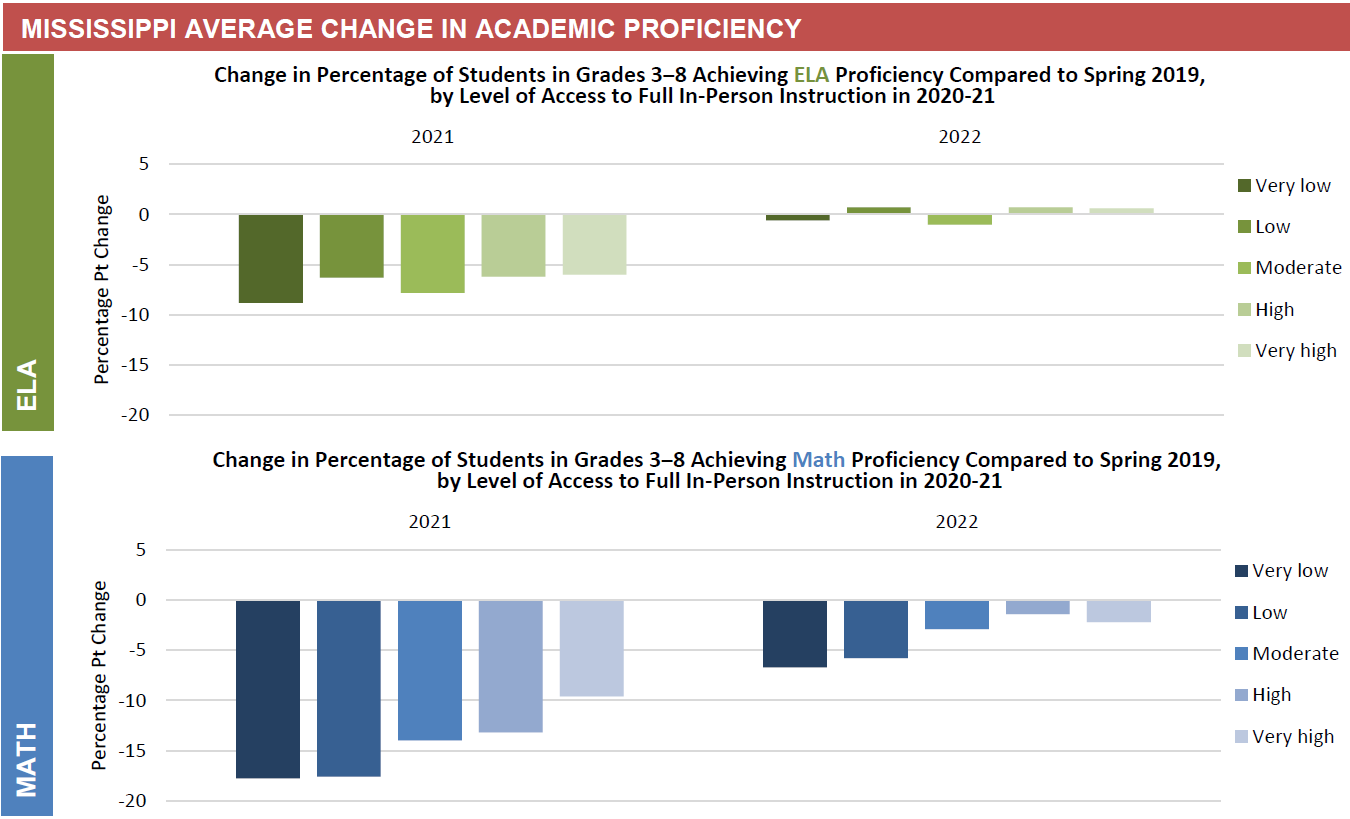Welcome to State Test Score Data Central!
Introducing a new resource
For those in the education space, the enormous challenges of the past several years need no introduction. The COVID-19 pandemic resulted in enormous learning losses, recovery has been very slow in many places, and inequality in educational outcomes across demographic groups has become even more profound. And while the pandemic has exacerbated these issues, it has also revealed what was already there: student proficiency in basic skills is often low, and educational outcomes are unequal.
This newsletter comes from the team behind the COVID-19 School Data Hub, which started during the pandemic as a way to track COVID-19 cases in schools, and evolved into the most comprehensive source for information on school closure during the 2020-2021 school year. You can read more about our work and access our COVID data here. During the pandemic, our team wrote research papers on inequality in school reopenings and on the relationship between school closures and learning losses.
In the last year, we have turned our focus to test score recovery, with academic work and a series of data briefs using state-level test score data from 2022 to map out which states were making gains post-COVID.
Standardized assessment data present only one measure of academic achievement. However, throughout this journey it has become clear that state-level testing data is nonetheless a key resource for understanding academic recovery patterns. State-level data is comprehensive for all students within a state, and often provides an earlier picture of student achievement than can be ascertained from the National Assessment of Educational Progress. Unfortunately, these state-level data are often difficult to use in their raw data form, especially outside of research groups with significant analysis capacity.
We have therefore embarked on an effort to make these data more widely usable by individuals, policymakers and journalists. This effort is ongoing, but our hope is to make a larger announcement in the fall.
In the meantime: within the next few weeks, states will begin to release their test score data from 2023 and this newsletter will cover those releases. We’ll aim to get out a report within a few days of the state data release, pulling together information on overall recovery and variation across groups and school districts, all in a usable form.
In addition, if you’re a journalist or policymaker reading this, and you want to cover any of those reports, we’re here to help! Please reach out if you need some data analysis for your reporting, and we’ll see what we can do.
Thanks for reading; you can look for the first data report-out from this newsletter within the next few weeks. In the meantime: be sure to subscribe so you see it first, and share it with your friends.



Another thing to keep in mind…
Having a teacher shortage comparison would help as well. After all, some states have allowed substitutes to take on full time teaching positions, while many others have reduced credential requirements (and started turning to for-profit credentialing companies). Some, like Florida, are even allowing former members of the military to be teachers with little-to-no other credentials. Keeping these factors in mind is also important in evaluating a state’s educational declines, as the pandemic has wreaked havoc on teacher hiring and retention (along with other pieces of legislation, like restrictive curriculums, book bans, etc.).
Fantastic and important analysis. I can’t wait for more state level data! A couple of questions/comments, though.
1. When comparing states, could you include a brief breakdown of their COVID policies? For example, how many districts went hybrid, how long hybrid was in place, state mandates around social distancing in schools, etc.
2. Which states had more room to fall. For example, if a state was at the top of the country in ELA scores before the pandemic, they, in theory, had more room to fall and therefore, may have had a larger decline but still rank higher than other states. This is an important distinction to make.
3. Also, it might benefit readers to know that while pandemic learning loss occurred, national scores were stagnate/declining (depending on state/area) before the pandemic began. In fact, such a decline was taking place for over 10 years. (https://hechingerreport.org/americas-reading-problem-scores-were-dropping-even-before-the-pandemic/).